ABSTRACT: Oracle has introduced a globally distributed database on Exascale infrastructure, purpose-built for the era of agentic AI, real-time analytics, and global data compliance. The platform ensures always-on availability, zero data loss, and seamless scale-out across geographies by integrating a new raft-based replication protocol with Exadata’s high-performance, serverless infrastructure on Oracle Cloud Infrastructure (OCI). Key enterprise use cases include financial transactions, petabyte-scale analytics, IoT ingestion, and smart metering, where data locality, elasticity, and operational resilience are mission-critical. With full SQL support, advanced sharding methods, zero-ETL cloning, and multi-cloud deployment flexibility, Oracle’s converged distributed database empowers organizations to meet rising AI demands while maintaining compliance and cost-efficiency.
Oracle’s latest release of its distributed database on Exascale infrastructure marks a significant advancement in global data architecture that addresses the demands of agentic AI, real-time analytics, and stringent data residency requirements. At the core of this innovation is a new raft-based replication technology, a consensus-driven protocol for log replication that ensures high availability, zero data loss, and fast failover in a distributed environment.
Oracle’s distributed database is built on a foundation of full SQL support, setting it apart from NoSQL-based systems that often require significant application rewrites and lack analytical depth. The system leverages Exadata’s highly performant, AI-optimized infrastructure and a serverless Exascale architecture in OCI, enabling hyperscale elasticity and pay-per-use efficiency. This architecture presents a unified logical database where data is physically distributed across regions and data centers, but accessed as a single system.
“For organizations to be successful with agentic AI, they need a nearly infinite data platform architecture that helps support data residency, and Oracle has delivered that with its latest release. Oracle Distributed Database on Exascale leverages Exadata’s exceptional high availability and AI processing performance to support critical back-end systems executing agent-generated tasks. AI and Agents will be distributed, so your data must also be. At the same time, Exascale’s hyper-elastic technology with pay-per-use capabilities ensures that cost efficiency is very compelling. This is a game changer for organizations looking for the latest in distributed database technology,” — Rob Strechay, Managing Director & Principal Analyst, theCUBE Research.
Key Use Cases: From Global Banking to Smart Metering
- Data Residency and Sovereignty: Supporting compliance with multi-country regulations by allowing specific shards to be deployed in-country while centralizing the application tier.
- Zero Data Loss for Financial Transactions: Active-active architectures using raft-based replication with millisecond failover for mission-critical applications.
- Petabyte-Scale IoT and Analytics: Smart meters and edge devices deliver real-time high-velocity data ingestion and analytics.
- Hyperscale OLTP: Example numbers from Oracle of 1M+ transactions/sec and 30B API calls/day supported on a 2.5PB distributed database.
Technology Differentiators
- Raft-Based Replication: An active-active quorum model ensures high availability and zero data loss.
- Advanced Sharding: Flexible data placement via policy-driven composite and custom sharding methods.
- OCI Exascale Infrastructure: Serverless elasticity with separate compute/storage tiers and instantaneous re-sharding.
- Zero ETL Cloning: Instantaneous, space-efficient copies of distributed databases for analytics or test environments.
- Full SQL Compatibility: Avoid application rewrites with native SQL support, unlike NoSQL-first competitors.
- Converged Database Architecture: Unified support for OLTP, analytics, AI, and document data.
Cloud-Native, Multi-Cloud Ready
Built on OCI and engineered for deployment across AWS, Azure, and Oracle Cloud regions, Oracle’s distributed database lets organizations scale globally while remaining compliant with local regulations. It also offers protection against cloud lock-in and pricing shifts by allowing independent shard deployments across cloud vendors.
Our ANGLE
We see Oracle’s globally distributed database on Exascale as representing a mature, enterprise-grade solution for next-generation data demands. Oracle is addressing the fundamental architectural requirements of agentic AI, real-time analytics, and sovereign data control by combining raft-based replication, converged data services, and a cost-efficient serverless architecture. This gives them an advantage in delivering a fully SQL-compliant, globally distributed database. We expect to see Exascale leveraged in other clouds in the future as OCI expands into sovereign and hyperscale environments — including milestones such as Oracle Database@AWS, which we discussed previously. This strategy of optimized Exascale hardware and new database replication is a powerful combination for organizations looking to start small and grow big with the use cases discussed. While Oracle is not the first to use rafts and shards, how they use them is somewhat unique. We believe that Oracle has continued to innovate and aim to lower the TCO for its databases through that innovation, as application stacks become more complicated and distributed.



